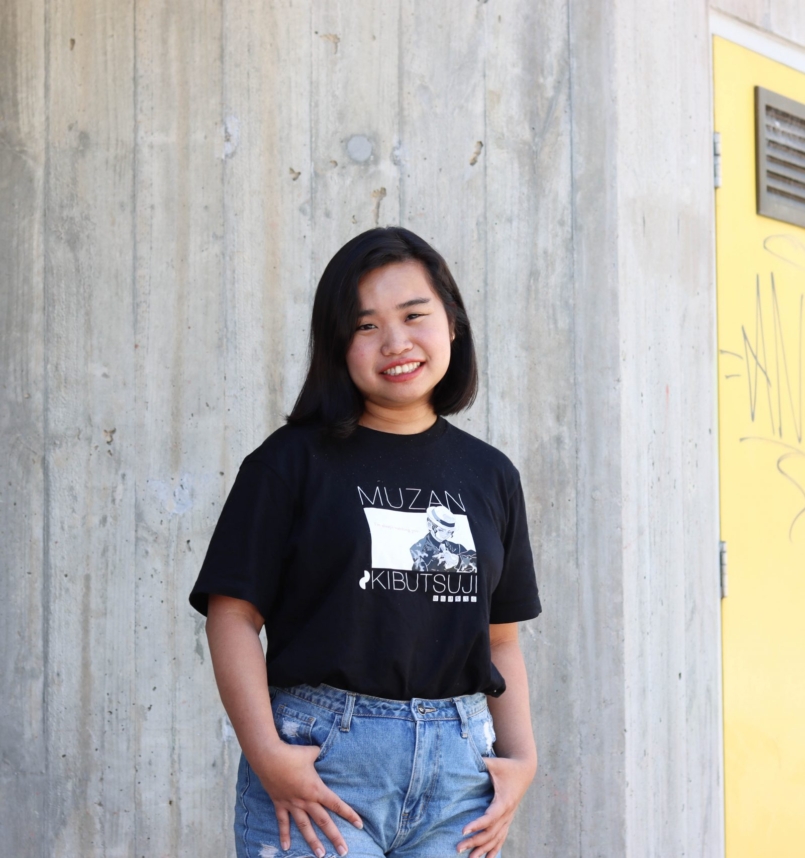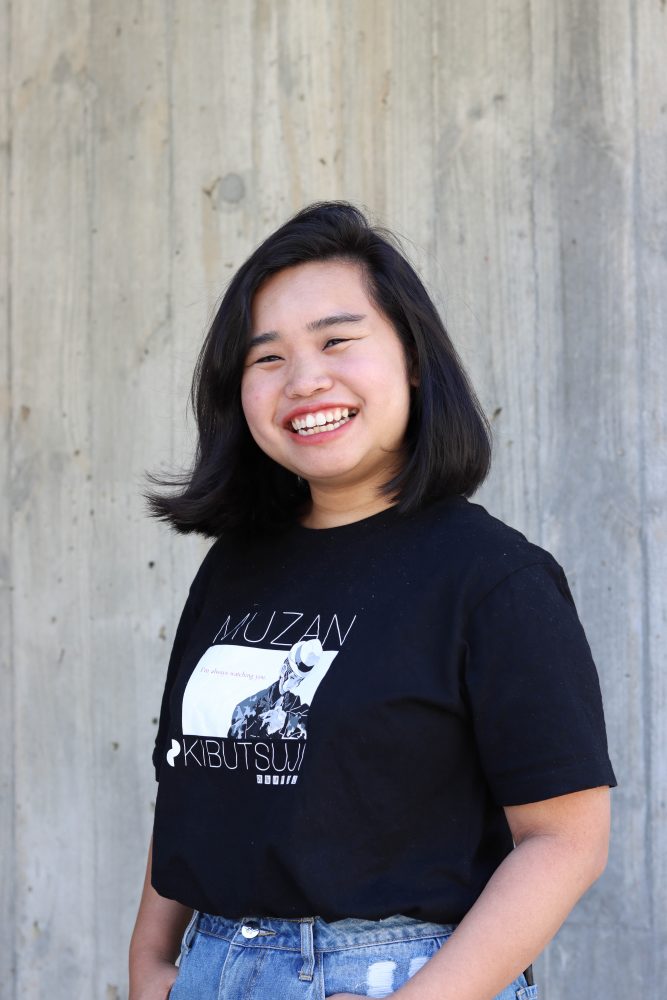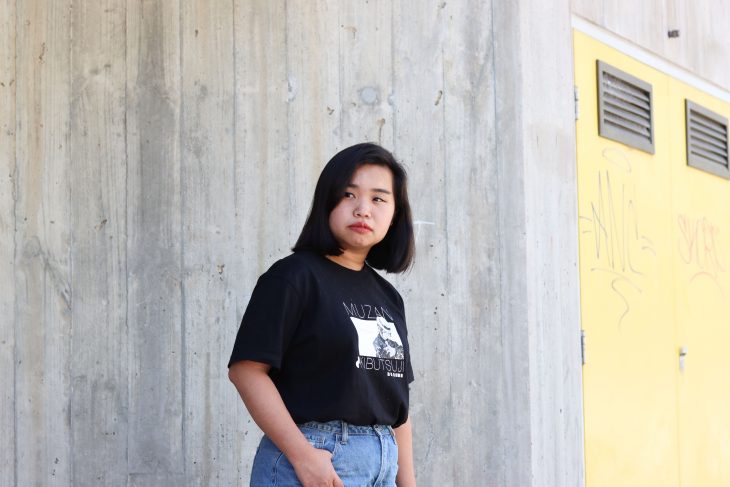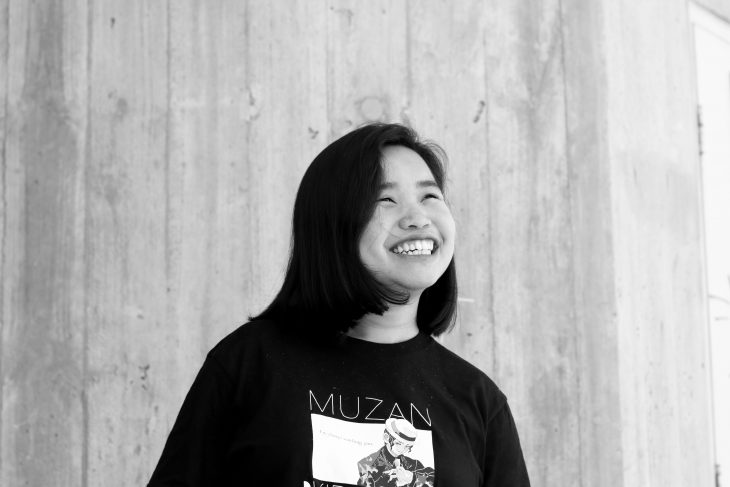heartlines
Simeon Neo

Heartlines explores what it means to write – from the heart and soul – and where that writing takes us. Every writers’ journey is different, so we invite you to take a moment to read, pause and reflect on what it means to shape stories for the page.
Simeon Neo is a photographer and writer who loves telling stories about the people around her and her personal experiences. Her work has appeared in Journal, COZE, Wave After Wave and in the 2021 Year Twelve Mock Exams. Her photography has been exhibited at Ugnayan Exhibit x Mingle Night and she is in the planning committee for upcoming arts exhibition, Lume — Collective One. Get to know more about Simeon below.

What do you do outside of writing?
Even though writing has always been my first form of expression, I got into photography when I was 18 and it has become another thing that I do. I love doing street photography and capturing the mundane, everyday moments that we sometimes miss or take for granted. I also have a thing for beautiful candid shots that capture people as their most unguarded selves.
I’ve also recently gotten into painting and embroidery which has been my most surprising passion. It’s one of those hobbies that I’m learning to enjoy even if I’m not always good at it HAHA.
Why do you write?
Writing was a way for me to express my thoughts and feelings, especially when these thoughts and emotions become so overwhelming and intense that I can do nothing but write them out. But as I grew older and experienced more things, I began writing not just for myself but also for people who may have shared similar experiences as me. It became a way for me to share my stories and my perspectives, however weird or boring these experiences may seem to me. Whenever people who read my work come up to me to say how much they relate to my writing or how they can hear the voices of my characters in their head, it affirms me that my writing is not just for myself but also for readers who read my work. Recently, I’ve been writing from a place of wanting to provide access and empathy into specific themes, based on my own personal experiences. I think writing is such a powerful tool to encourage empathy and compassion and I think that is why I write.
When did you decide to pursue writing and what triggered that decision?
There was never really a moment where I decided I wanted to pursue writing. Even now, I still don’t know if I am actually pursuing it. All I knew was that I want to be a published novelist someday and since there are all these opportunities…why not give it a go? But if I had to pinpoint a moment, I guess it would be when I discovered Curtin has a Creative Writing major and that such a thing exists. Coming from Singapore, writing was never seen as a career option, much less something to pursue. So, the fact that Curtin had an entire major on creative writing was mind-blowing to me. Even then, choosing to major in Creative Writing was more of a frivolous thing, rather than a career choice. But if I were to go back in time, I’d do it all over again.

What are you currently reading and why?
I’m currently reading Ours Are the Streets by Sunjeev Sahota. It has such a cool book cover. I love it. But also I grabbed it thinking it was about mental health but it turns out to be about something quite different and I’m so glad I picked it up. Since it’s written by a Pakistani author and based in the UK, it gave me a glimpse into a perspective that is vastly different from my own. There is so much about the characters and the way they relate to each other that mirrors my own personal experience. But then there are also other parts that I will never be able to fully understand but I can at least have an insight into this particular perspective and why the characters did what they did.
Is that also an inspiration for your current work?
Not exactly. It’s quite different in terms of the theme and the tone. But then again, everything can serve as an inspiration. I like to think that as long as I am still reading, still consuming, it will eventually pour out into my own work in ways that I might not expect. And if anything, it will at least improve my writing!
When you first applied, you had already been involved in Centre for Stories’ Indian Ocean Mentoring Program in which your story ‘A Bowl of Soft-boiled Eggs’ was published in our anthology Wave After Wave. How did the hot desk differ to the mentoring? And what did you work on while hot desking?
As a mentee, I had more accountability from my mentor, Amanda Curtin, and I got to receive consistent feedback which pushed me to think harder and deeper about my work. As a hot desker, I had more independence and was able to work at my own pace at a dedicated time and space each week, which also pushed me as a writer in learning to keep myself accountable and to seek out my own network of writers from others in the space.
I started out working on two short story ideas, one of which was an unfinished novella that I wanted to turn into a short story. But struggling through weeks of writers’ block forced me to break out of my comfort zone and so I decided to turn my unfinished novella into a series of narrative poems. So it’s still a short story but in the form of poetry.
Walk us through an ‘aha’ moment while you were on the hot desk.
There were quite a few of those smaller ‘aha’ moments. But one big one was when I stopped forcing myself to write a short story and instead gave into a sudden urge to write poems instead. There was this moment of release as I started breaking the narrative down into stanzas of imageries and free flowing words that didn’t need to adhere to logic or a particular set of rules. I realise then that I shouldn’t force myself to write what I don’t want to write, and instead allow my brain (or my writer’s instinct) to instead lead me towards what I do want to write in that moment.
Based on your experiences in the writing industry, including your hot desk at Centre for Stories, what advice would you give to writers who are starting out or are unsure where to start?
I always tell people to just start writing! And when you’re not writing, go to events or look for opportunities from organisations like Centre for Stories. Don’t be afraid to take the plunge and just apply. You never know where that one opportunity might lead you to. And of course, seek out other writers and make friends! The literary community in Perth is so welcoming and inclusive that even introverts like me can feel safe to connect and make friends.

Centre for Stories is about taking things at your own pace, working with others, and providing a safe place for all. How has this space enabled you to think and explore your work?
Two things; Lululala’s coffee and the library!
Being at the Centre for Stories gave me a dedicated space to work and also meet other writers who are all so interesting with their own passions and projects. It was nice being able to sit down for lunch with other people within the Centre for Stories and to chat about our work and glean some wisdom from others who might have experienced some of the struggles I had. The library is also a treasure trove of books from all over the world by writers of different backgrounds. I had so much fun reading all these different books that I might not even have access to at the local libraries or bookstores.
What will you be working on next?
I will continue to work on my series of narrative poetry from the hot desk. But I’m also working on a poem inspired by a passage in the book of Ezekiel for an upcoming arts exhibition where I will be reading. For both pieces of poetry, I’m working on drawing out imageries and flow to convey a story and a theme. My poems have always been free flow, and focusing on my emotions through imageries. With these poems, I wanted to focus on narration and to illuminate particular messages about struggles with mental health and about finding hope.
Simeon Neo is a photographer and writer who loves telling stories about the people around her and her personal experiences. Her work has appeared in Journal, COZE, Wave After Wave and in the 2021 Year Twelve Mock Exams. Her photography has been exhibited at Ugnayan Exhibit x Mingle Night and she is in the planning committee for upcoming arts exhibition, Lume — Collective One.
Writing Change, Writing Inclusion is Centre for Stories’ signature writing program for 2021 to 2023. Generously funded by The Ian Potter Foundation, Australia Council for the Arts and Centre for Stories Founders Circle, this writing program features mentoring, hot desk, and publication opportunities for emerging writers from culturally and linguistically diverse backgrounds and/or Aboriginal and/or Torres Strait Islander backgrounds.